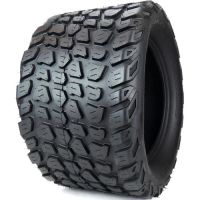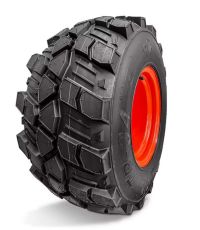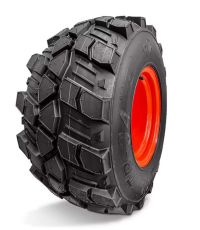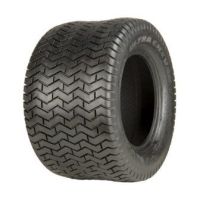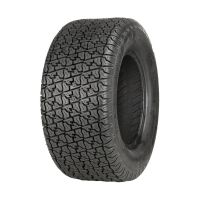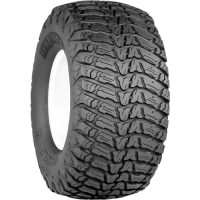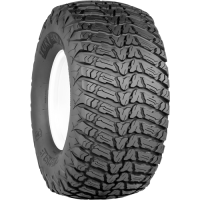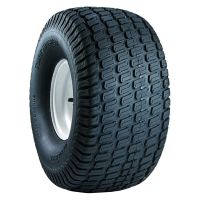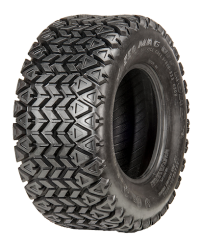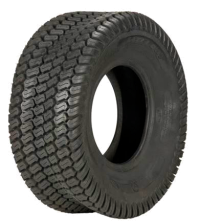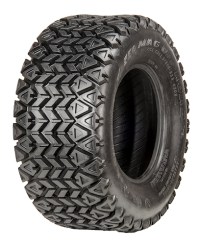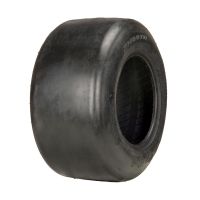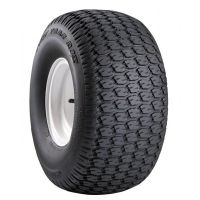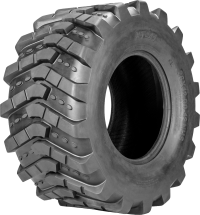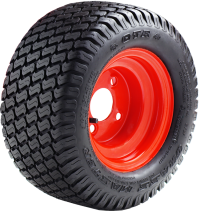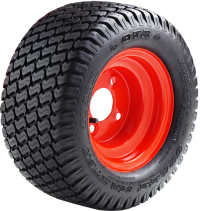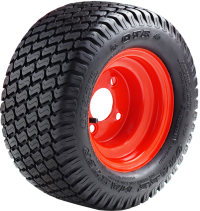Zero Turn
-
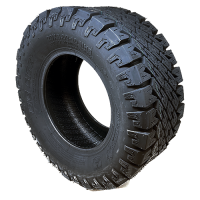 OTR ARMSTRONG BIG BITE24-12.00-12 B TIRE ONLY ARMSTRONG BIG BITE, OE-HUSTLERItem #: T1730424120012Availability: 4More Info...
OTR ARMSTRONG BIG BITE24-12.00-12 B TIRE ONLY ARMSTRONG BIG BITE, OE-HUSTLERItem #: T1730424120012Availability: 4More Info... -
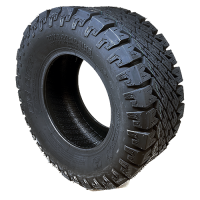 OTR ARMSTRONG BIG BITE26-12.00-12 C TIRE ONLY ARMSTRONG BIG BITE, OE-HUSTLERItem #: T1730626120012Availability: 1More Info...
OTR ARMSTRONG BIG BITE26-12.00-12 C TIRE ONLY ARMSTRONG BIG BITE, OE-HUSTLERItem #: T1730626120012Availability: 1More Info...
Our Zero-Turn Mower Tires Are Perfect for Providing the Power and Maneuverability to Care for Your Yard
Landscapers rely on zero-turn mowers to make quick work of large lawns and expansive stretches of grass. Since these mowers must be able to make delicate maneuvers at relatively high speeds, the tires must be as gentle on the landscape as possible.
Zero-turn mowers work similarly to bulldozers or tanks, with the operator using a separate control lever for the left and right drive wheels. When one lever is engaged, the mower turns in the direction of the stopped wheel.
This steering mechanism can be potentially damaging to the turf. The challenge for manufacturers is therefore to create tires with enough traction to propel the mower efficiently without digging into the grass and creating ruts or divots.
Zero-turn mowers aren’t just used to manicure dense lawns and other grassy areas. They may also be used for cutting widely spaced grasses and plants, with most of the distance they travel being packed dirt or pavement. While there are specific tires for these cases, users will generally get tires that leave little or no imprint on the turf.
Types of Zero-Turn Mower Tires
On a zero-turn mower, it’s the rear tires that perform the majority of the work. They must transmit power to the ground and bear most of the weight of the machine. The front tires still play an essential role, of course, but they’re mostly there to keep the mower moving with minimal friction.
Front and rear zero-turn mower tires come in dramatically different sizes, as well. The rear-drive tires tend to be large, with complex, aggressive treads, while the front tires are much smaller and narrower and have little to no tread.
It’s important to keep this size difference in mind when shopping. If you purchase four identical tires, they won’t all fit your mower correctly.
Pneumatic (Air-Filled) Tires
Pneumatic zero-turn mower tires come in two main types: tube type and tubeless. Both rely on air pressure to maintain their shape and support the mower but are structurally quite different. Tube type tires make use of an inner tube that’s separate from the outer tire, while tubeless tires have no such inner tube.
The main advantage of tube type tires is that if there’s a puncture on the outer tire, it’s cheaper to fix or replace because the inner tube remains unaffected. By contrast, tubeless tires function like modern car tires, holding the air directly with no separate tubes.
While tubeless tires can be harder to mount without specific equipment, they reduce the overall number of parts that can experience problems. With tube type tires, the tube or the tire may have issues. However, tubeless tires only have a single point of failure, and minor punctures are usually easier to remedy.
There are also semi-pneumatic tires. Generally, if this type of tire is used on zero-turn mowers, it’s only on the front. Semi-pneumatic tires have no valve stem but contain a pocket of air inside. Otherwise, they’re similar to solid rubber tires. They also weigh less than solid rubber tires while offering a comparable level of puncture resistance.
Airless (Flat-Free) Tires
One of the most exciting and interesting developments in zero-turn mower tires is airless or flat-free tires. These are sometimes called “Tweels,” a combination of “tire” and “wheel.”
Unlike the traditional method of crafting airless tires, which is to either make them solid rubber or fill them with an alternative substance such as foam, modern airless tires use flexible polymer-resin spokes to absorb impact. Another type of airless tire uses materials and construction techniques that enable the tire to support itself—no air required—even under extreme loads.
In addition to needing no air to maintain their shape, airless tires provide a smoother ride than traditional pneumatic tires, resulting in more even cuts. They also tend to have a longer wear life.
Keep in mind that the upfront investment in these airless tires will be significantly more than with pneumatic tires, with prices sometimes being as much as 10 times as high. With their longer lifespan and no downtime due to flats, however, the cost will more than even out in the end.
Speaking of solid rubber tires, they may also occasionally be found on zero-turn mowers, but only on the front. Since these tires don’t have to be very large and support much less weight than the rear tires, they can be solid without affecting the ride quality. Solid rubber tires and airless tires both have the benefit of never going flat.
Turf Tires
Turf tires are specially designed to cause minimal impact on turf during mowing. The tradeoff is that the tread is much less aggressive than other types of tires, meaning they have less traction, especially in wet conditions. These tires perform best on dry surfaces , especially on slopes and hills.
Even so, turf tires can be a great compromise between slick tires and large-lug industrial and agricultural tires.
Key Features to Consider When Choosing Your Zero-Turn Mower Tire
The first thing you should ask yourself when selecting new tires is, “What type of terrain will I be mowing?” Answering this central question will help you make an informed decision and ensure that you get the performance you need.
Here’s a closer look at some specific features worth considering.
Tread Patterns
On a zero-turn mower, the rear tires are typically the ones with the most aggressive tread. Agricultural tires, for instance, have diagonal lugs spaced far apart to provide a dependable grip and easily channel mud and loose soil.
Industrial tires are less aggressive, with closer-spaced lugs that offer increased durability. These are mainly intended for use on construction sites where the user must frequently traverse paved surfaces.
As for front tires, the tread doesn’t need to be nearly as pronounced. Front tires for zero-turn mowers usually only have a few ribs and grooves to help maintain a straight path. Sometimes, they have no tread at all. This serves to ensure that they don’t tear up the turf or make any undesirable marks.
Tire Size
Similarly to flotation tires, zero-turn mower tires are primarily measured in inches. For example, it’s common to see tire sizes like “15x6.50-6.” Such a size would denote that the tire is 15 inches in diameter, 6.5 inches wide, and designed for a 6-inch rim.
Load Capacity
Load capacity refers to how much weight a tire can handle and is typically measured in pounds.
You’ll likely notice differences in load capacities between radial and bias ply tires. This is because the construction of bias ply tires makes their sidewalls inherently stronger.
However, radial tires can be constructed in a way that makes their sidewalls just as stiff, though this requires the addition of more plies.
Durability and Material
Your zero-turn mower must be able to cover a significant number of miles, some of which may include rough terrain. As such, it’s essential to ensure that your tires are made from high-quality rubber.
Check product reviews to see how many miles customers typically get out of their tires. New tires may look perfectly fine, but real customer experiences will tell you if they tend to experience higher-than-average punctures, tears, or rips.
How to Choose the Right Tires for Your Zero-Turn Mower
Thanks to the wide variety of tires available and their specific use cases, your purchasing decision will primarily be influenced by your particular situation. The type of terrain you mow most often, the amount of traction you need, the weight of your mower, and the number of miles you expect to put on your machine are all important factors.
If you use your zero-turn mower in a commercial setting as a landscape professional, you should look at your tires as an investment that will save you money over time. The downtime caused by using inferior-quality tires will generally cost you more than buying better tires in the first place.
If downtime is a major issue, you may want to consider switching to airless tires. They have a wear life of up to three times longer than traditional tires and ordinarily present far fewer maintenance concerns.
Regardless of whether you’re a landscaper or a homeowner, you need to protect your turf from damage. Select tires that won’t dig in and harm the grass. You may need to modify your mowing habits to compensate, such as avoiding mowing in wet conditions.
Why Buy Zero-Turn Mower Tires From Us?
Picking the right tires for your zero-turn mower can seem daunting at first, especially with so many options out there. If you’re unsure which way to go, an industry expert can help you make the right choice. They’ll help you get the best bang for your buck by steering you toward the tires that will provide the necessary performance and durability.
When you work with a reputable supplier with a large inventory, you’ll get the exact tires you need and the peace of mind of knowing that you’re getting what you paid for. You’ll also receive trustworthy customer service and assistance should there be any problems with your new tires.


